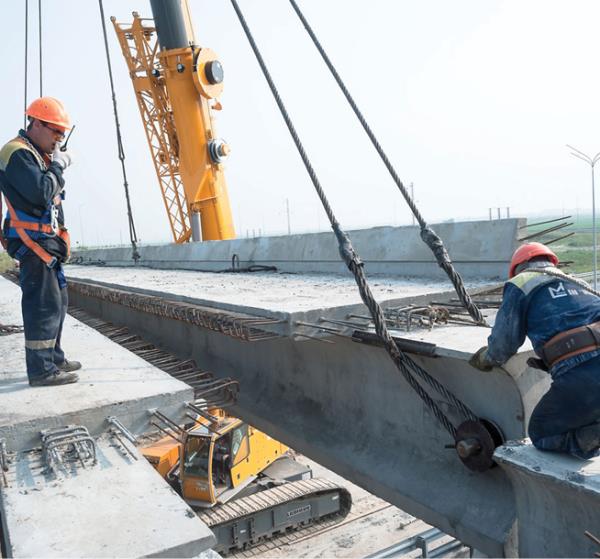04 April 2024

Luke Wilkinson, managing director, Mobile Tornado
Born in the midst of World War Two, the walkie talkie has a rich and colourful history; still remaining a renowned technological device even today. However, the push-to-talk (PTT) technology behind it is still not well-known, and even less well-known are the transformations that took the two-way radio and made it the basis for communication across various sectors. Over the last decade, as cellular network infrastructure improved, push-to-talk over cellular (PTToC) became viable and revolutionised long-distance communication as we know it.
PTToC has shifted technology away from land and digital mobile radios to platforms and devices that can connect individuals and groups of people in real time, wherever they are in the world, with the single press of a button. Critical sectors that were previously relying on traditional radio systems can now use PTToC for more efficient communications. This has allowed them to take advantage of the GPS location tracking, lone worker features, and multi-media messaging that many PTToC platforms offer.
The journey of PTToC
The premise behind PTT lies in the necessity for instant communication within organisations, whether that’s for those working in public safety, hospitality, security, construction or logistics: the use cases are endless. However, due to the lack of network infrastructure up until the early 2000s, users needing instant communication were largely limited to two-way radios.
“Anything that can enhance communication capabilities whilst being cost efficient is going to appeal to businesses. But it is in organisations where rapid real-time communication is vital for public safety or business operations that PTToC really shines.”
However, at the turn of the century, as cellular network infrastructure began to develop more significantly, mobile phone manufacturers began incorporating PTT features into their devices, opening up a new dimension to instantaneous communication. However, this didn’t come without the challenges of network compatibility and hardware constraints, which hindered widespread uptake of PTToC, causing many to still opt for conventional two-way radios.
Once cellular network infrastructure was more widely developed, PTToC platforms were able to be incorporated into both smart and rugged devices. By alleviating the need to invest in expensive radio equipment, PTToC became an accessible and cost-effective solution for connected organisations.
Why two-way radios are no longer enough for businesses
Anything that can enhance communication capabilities whilst being cost efficient is going to appeal to businesses. But it is in organisations where rapid real-time communication is vital for public safety or business operations that PTToC really shines.
A decade ago, when network coverage was patchy, few critical services invested in PTToC as they couldn’t afford to risk the safety of their employees and others, instead relying on legacy radio stations. However, this changed in 2013 when the UK government announced it would use PTToC for its new critical communications system. Via PTToC, the Emergency Services Network would benefit from efficient video and/or voice one-to-many or one-to-one communication without the need for dialling or ringing. PTToC is a cost-effective alternative to two-radios as users can leverage existing smartphones or specialised devices, reducing the need for extra hardware investment. They also require less infrastructure investment compared to traditional radio systems.
For businesses beyond the public sector where real-time communication is crucial, for example in construction companies, the adoption of cloud-based PTToC solutions has bridged communication gaps. World-leading PTToC platforms often facilitate seamless switching between networks, allowing uninterrupted communication between teams and individuals.
Both PTT-compatible devices and PTToC management solution platforms have driven the market upwards. So much so, that a recent study by Polaris Market Research forecasts that the global push-to-talk market will reach US$61.28 billion by 2030. With secure communication capabilities, enhanced call management, cost control, and added convenience, PTT has a lot to offer businesses with a sprawling workforce.
The digital revolution and PTToC’s impact on critical sectors

The digital revolution and the surge in remote work have amplified the need for instant and reliable communication tools. Specifically, PTToC has proven its indispensability across critical sectors, including in security, logistics, and public safety. The ability to share real-time location information, send SOS alerts, and monitor lone workers has proven invaluable in improving operational efficiency and safety in these critical domains.
The standardisation of infrastructure platforms in the PTToC market presents opportunities for various industries by allowing interoperability between PTToC devices and systems from different manufacturers. However, challenges like interoperability issues between Land Mobile Radio (LMR) systems and PTToC solutions persist, especially in sectors where instant and reliable communication is crucial.
Fortunately, some PTToC management solutions are starting to tackle this problem, creating bridging solutions that ease the integration between LMR systems and PTToC, without the need for a physical gateway or donor devices. This will allow organisations that still rely on traditional radio systems to enhance communication capabilities without the need to replace their existing system or add any additional hardware.
New features are still being integrated into PTT platforms and devices regularly, and a look at the history and development of the technology shows how far it has come since the two-way radio. With these new updates, it is likely that PTT, and specifically PTToC, will continue to have a cross-industry impact across critical sectors for the foreseeable future.










